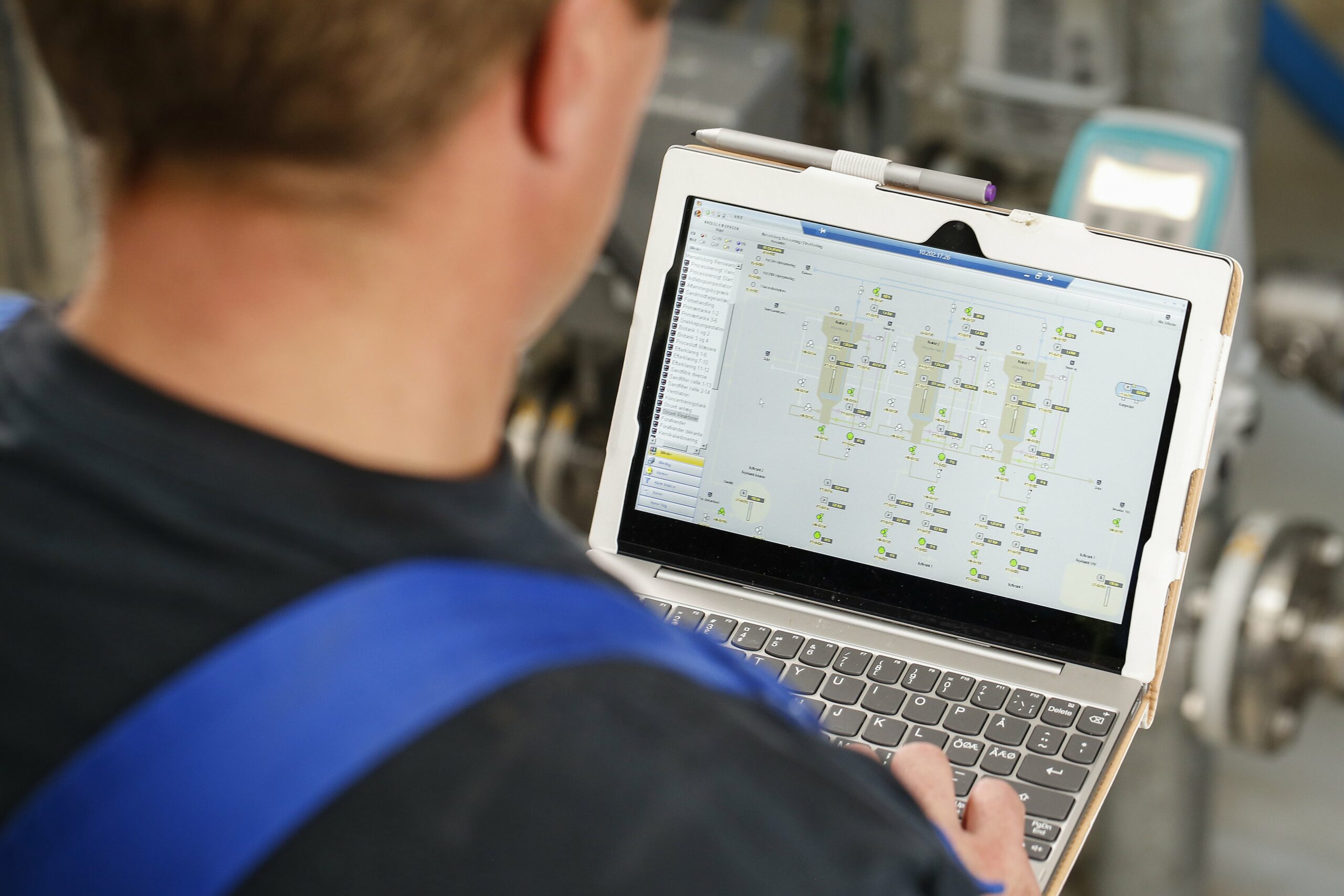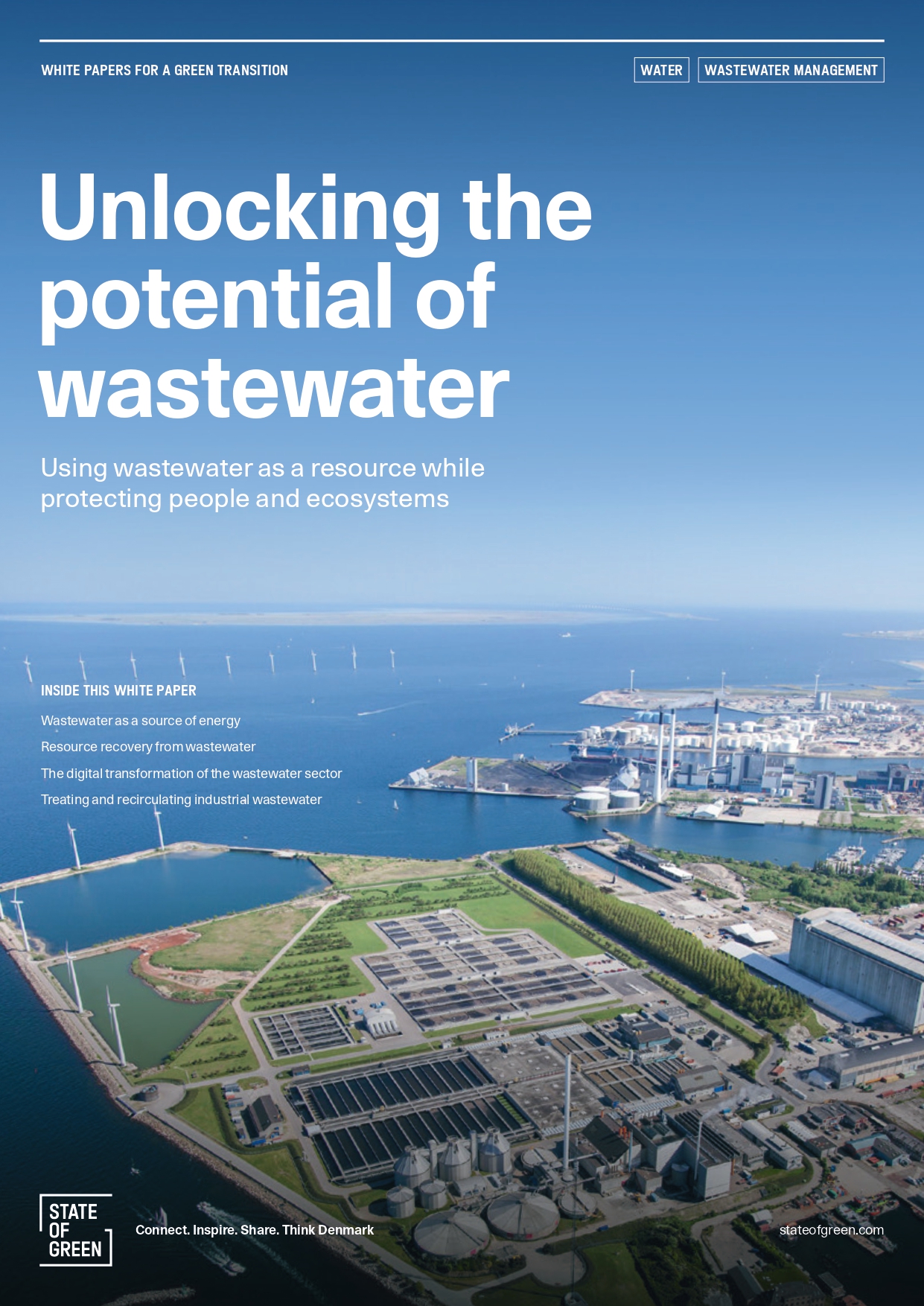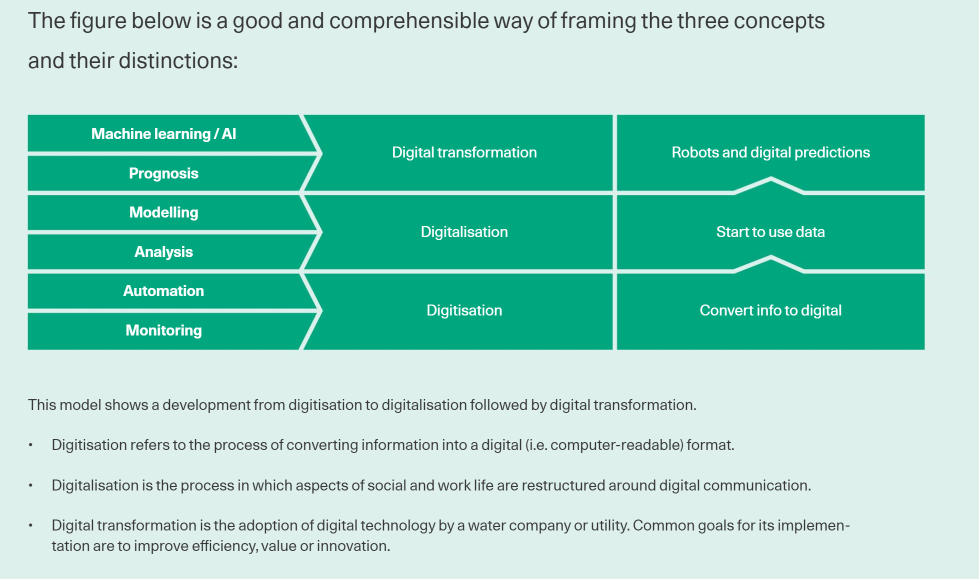Download our publication on unlocking the potential of wastewater
Discover our white paper on how to use wastewater as a resource while protecting people and ecosystems.
Explore the publicationPerspective
Digital water solutions
Water management

Photo: Marselisborg Aarhus


Discover our white paper on how to use wastewater as a resource while protecting people and ecosystems.
Explore the publicationDenmark is one of the most digitalised countries in the world. As the surrounding society has become increasingly digital, so has the water sector. Today, most wastewater facilities see digitalisation as necessary for overcoming the current and future challenges facing them. However, while the steps involved in a wastewater treatment plant’s digitalisation journey are the same, their starting points, individual needs and ambitions may not be.
Regardless of the starting point, a digital transformation affects the entire facility and is a means for improving operations and investments, attracting and maintaining the workforce, and monitoring and documenting performance towards stakeholders, such as authorities. Automated management systems are widely implemented across wastewater treatment plants in Denmark.
By digitally monitoring water pressure, temperature, microbial levels and other key indicators, these systems enable utilities to prioritise their daily efforts effectively. This approach not only saves time in locating leaks and addressing issues that require onsite attention but also facilitates the nearly unmanned operation of the treatment plants. For instance, alarm systems can digitally monitor nighttime flow data, ensuring efficient and continuous oversight without the need for constant human presence.
Furthermore, ongoing asset monitoring can alert the utility company of actions needed before malfunctions occur in the systems or service connections. This saves time and cost-consuming shutdowns of the treatment plants. Asset management systems can also be used to predict cloudbursts, assess the capacity of water flow, and control water flow pressure on the sewers.
This diagram illustrates the progression from digitisation, where information is converted to digital format, through digitalisation, which restructures processes around digital communication, to full digital transformation, incorporating advanced technologies like AI and machine learning for enhanced efficiency and innovation.

Digitalisation is not a one-step transformation. The digital journey in Denmark has been underway for the past 20 years. A gradual digital transformation enhances performance opportunities by progressing through three stages: digitisation, digitalisation and digital transformation.
Digitisation is the first step, involving the conversion of analogue information into digital form, such as scanning documents. This improves performance by making data more accessible and easier to manage. The second step, digitalisation, uses digital technologies to change and improve business processes, such as automating tasks and integrating systems, leading to increased efficiency and reduced costs. Finally, digital transformation represents a comprehensive shift in how an organisation operates, incorporating digital technologies into all areas of the business.
This step drives innovation, improves customer experiences and opens new business opportunities. Each step builds upon the previous one, collectively enhancing the organisation’s overall performance potential. However, experience has shown that digital transformation is like aiming at a moving target as new regulations, expectations, threats and technological advancements constantly bring new solutions to the market. Fortunately, the foundation has been laid for Danish wastewater plants in close collaboration with technology providers to ensure that new challenges and opportunities are continuously addressed and incorporated.
solutions
Climate change adaptation
+4
Perspective
Sector coupling
+9